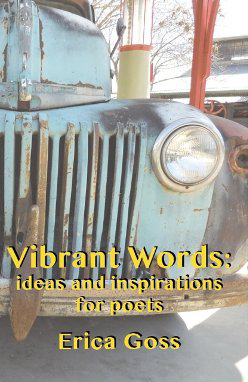
Paperback, 52 pgs.
I am an Amazon Affiliate
STONE, Empty Chair by Erica Goss is a collection of haiku celebrating the four seasons. The poems in the winter section cleave space and time into separate parts as the narrator looks to connect to the past and a time when her father was alive and reachable.
Spring is a focus on rebirth, but how does someone become reborn in their later years when family has passed away. The narrator learns through trial and error that time moves forward and things change whether we want them to or not. There must be a letting go.
digging roots in damp soil white hair
Summer has a heavy atmosphere of nostalgia as the narrator explores her childhood, moments with family, and the wonders of nature.
Fall comes and the reader is thrust into the loneliness of time passing — a lone heron swimming, zinnias on the verge of death, a deceased monarch. Even amidst this loss, there is a moment in the final haiku in which the narrator is still looking — searching for something beyond that horizon, a moment of hope for the future.
end-of-summer wind scattering of empty chairs nothing moves the stone
STONE, Empty Chair by Erica Goss is a gorgeous collection of haiku that does not hinge solely on nature to propel the narrative. These haiku are more personal.
RATING: Cinquain
Other Reviews:
About the Author:
Erica Goss served as Poet Laureate of Los Gatos, California from 2013-2016. Her latest poetry collection, Night Court, won the 2016 Lyrebird Prize from Glass Lyre Press. She is the author of Wild Place (2012, Finishing Line Press) and Vibrant Words: Ideas and Inspirations for Poets (2014, Pushpen Press).
As Poet Laureate for Los Gatos, she organized the first St. Patrick’s Day Poetry Walk, created Poems-in-the-Window (local businesses displayed poems during National Poetry Month), recorded The Poetry Podcast (50-plus recordings of poems in a variety of languages), established the first Los Gatos Poet Laureate Scholarship, and launched The Poetry Kitchen, a poetry reading series at the Los Gatos Library.
Erica’s work is featured in numerous anthologies and journals, including Pearl, Ekphrasis, Main Street Rag, Café Review, Perigee, Dash Literary Journal, Eclectica, Up the Staircase, Lake Effect, Consequence, Stirrings, Convergence, Passager, Atticus Review, Gravel, Tinderbox Review, Caveat Lector, Rattle, Zoland Poetry, Spillway, San Pedro Rover Review, Comstock Review, Contrary, and Innisfree Poetry Journal. She received the Many Mountains Moving Prize for poetry in 2011. She was nominated for the Pushcart Prize in 2010, 2013, and 2017, Best of the Net in 2016 and 2017, and received the first Edwin Markham Prize for poetry, judged by California Poet Laureate Al Young. Wild Place was also a finalist in the 2010 White Eagle Coffee Store Press Chapbook Contest, and received a special mention from Jacar Press’s 2010 Chapbook Contest.
Erica was the host of Word to Word, a Show About Poetry, on KCAT Cable TV in Los Gatos, and wrote The Third Form, a column about video poetry, for Connotation Press. She is the co-founder of Media Poetry Studio, a poetry-and-film camp for teen girls. In 2018, Erica founded Digital Storytelling of the Pacific Northwest, an arts education program for teens and adults. Erica lives in Eugene, Oregon, and teaches classes in poetry, memoir and video.










 Erica is truly a driven poet. Thanks so much for sharing your travels and your inspiration with us.
Erica is truly a driven poet. Thanks so much for sharing your travels and your inspiration with us.


